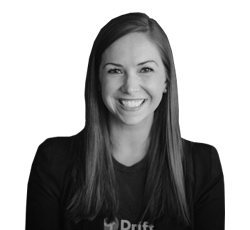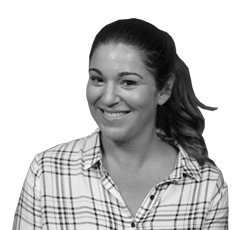Why customer retention is a key metric for seed-stage investments
Marvin Liao
|
Partner
of
500 Startups


Marvin Liao


Episode Summary
Today on Churn.fm, we have Marvin Liao, an experienced startup advisor, and Partner at 500 Startups, specializing in seed-stage investments.
Marvin shared his thoughts on how churn and retention affect his investment decisions, how he helps early-stage startups identify their ideal customers, and why he thinks retention is super crucial for early-stage growth.
We also talked about why you shouldn’t blindly follow benchmark metrics without enough context, areas that most startups get wrong when it comes to churn and retention, and the one question Marvin wishes entrepreneurs would ask more.
As usual, I'm excited to hear what you think of this episode, and if you have any feedback, I would love to hear from you. You can email me directly on Andrew@churn.fm. Don't forget to follow us on Twitter.
Marvin Liao
Recommends
Why you should make retention your new growth strategyIf Nothing Else - Segment ChurnMentioned Resources
Transcription
Andrew Michael
Hey, Marvin, welcome to the show.
Marvin Liao
Hi, it's great to be here.
Andrew Michael
It's great to have you. For the listeners. Marvin is a partner in 500 Startups and he's focused on the accelerator seed fund investments they make. He's an experienced board member and advisor. He's helped over 25 companies and areas like marketing, new market entry, business development, sales, management and sales strategy. Prior to 500 startups Marvin also spent 10 years at Yahoo working in various sales and management roles, helping them scale their business across Europe, Middle East and Africa. So my first question for you, Marvin is what drove you to make the switch from the startup and corporate world to becoming an investor and advisor?
Marvin Liao
Um, yeah, that's a great question I always enjoyed. It was kind of luck. I took two years off after I, I left Yahoo, just to goof around and do some angel investing and just actually just want to goof around. And, you know, one of the I ended up mentoring a lot of startup accelerators, and one of them happened to be 500. So I got to know them over the last, you know, probably over a year and a half, almost two years as a mentor. And I guess they felt guilty for the mentoring. I did pretty mentoring I did for the companies for their portfolio. They asked me to join them and help start their San Francisco office and I know them for a while and I was interested, you know, sort of interested in sort of investing sort of space where I never thought I always thought I'd end up going back into the operating world. And running the accelerator is kind of an interesting compromise of you kind of get to invest. But you also get to sort of like operate sort of like a run something for a period of time, too. And so that was a very good. It was an offer I couldn't refuse. It sounds like it's definitely a good intersection as well of having the best of both worlds in a way.
Andrew Michael
Yeah, absolutely. So it's interesting as well, then you've been going at it for quite a while now. And I'm interested to hear your perspective on how you've seen the shift in the landscape when it comes to investments. And have you noticed any specific changes maybe when it comes to like b2c versus the b2b SAS space?
Marvin Liao
Yeah. I mean, this is changed to I've been investing now. So I've been doing this now for close to almost six years. I'll be six years in February 2020. And what is interesting is just how much the landscape has shifted. You know, number one, the Port Authority Like new seed funds, so we're pre seed seed investor, there's just, I mean, there's literally like hundreds of new seed funds. So it's gotten more competitive. I think the quality level, the founders have gotten caught up. And so it's also kind of competitive over there. every category is really, really crowded, it seems. So there's very, you know, I would say that I can't see there's like a lot of new stuff under the sun, or at least if there is new stuff, there's just fast competition very, very quickly. I've definitely seen a big shift from when I first started almost six years ago was mainly consumer related deal flow. And now it's really shifted over the last two to three years to really more on the business of business side. And with SAS being, you know, I always say, a very, very common business model, and which is good in some ways, right? But I would remind a lot of the listeners that just like SAS is still a very if you think about as a business model is still relatively new. It's like it's less than maybe 15 to 17 years old, like it's a very relatively new business one.
Andrew Michael
Absolutely. And it's it feels as well. It's in its infancy at this point in time for people to innovate and build upon it as well. Like, I don't think everything's been seen and done yet in the SAS space in terms of how do you operate and build these
Marvin Liao
businesses? Yeah, not not at all. I still think it's very early days. But what is interesting in this space is that there there is starting to be this like canon of knowledge, you know, between sort of Sastre and SAS doc. And there's a lot of like a lot of VCs. There's a lot of deep experts and VCs in the VC world, as well as entrepreneurial world that are actually very open by sharing their knowledge that that part's been been great, I think.
Andrew Michael
Yeah, definitely. I can see that as well. It's a very, very open culture when it comes to sharing knowledge. And I think as a whole, it's really pushing the industry forward. Like you said, there's some really, really great examples out there. So I mentioned taking a little bit step further and bring in into the line with the podcast and the theme. What are some of the things you looking at when you're making an impact? vestments, and how important is churn and retention
Marvin Liao
and eternity retention in the early stages really, really important, right? So for me, it was just like, it's a lot of investors talk about traction, you know, and traction means a lot of different things. I could be growth rate, it could be revenue, it could be size of user base. And I think these are all really important things. But I think term retention is actually really, really crucial. So the way I think about this is, I actually want to understand startup founders sort of like, what their customer segmentation is, right? Like, who they think their ideal customer is. And then based on that, and that's ideal customer, ideal user, you know, I use those those terms interchangeably. You know, then this next thing is just, I would rather see, you know, high retention high, you know, sort of like a high conversion, high retention, for that that segment. And so the way I think about this is it's better to have remember who said this, but there's like, it's better to have like 100% of fanatical users or customers and like 1000, sort of like mountain Certain white users or customers out loud be like you. And so this is actually the retention piece is actually really important. Right? Absolutely.
Andrew Michael
And then so you mentioned the concept of the ideal customer profile or ideal customer user. And I'm assuming as well, you advise a lot of companies at the early stage on this to really try to double down and figure that out. What are some of the things you work with the companies in the accelerator for them to try and identify? And because at the early stage, I think you don't really have the luxury of having hundreds of thousands of customers to be able to pinpoint and see what conversion or what retention looks like. So what are some of the things you're doing with the companies? Like how can they try and figure out who this ideal customer profile should be at the early stage?
Marvin Liao
So I think in the beginning, it starts with a hypothesis, right? You should have a general view on who you think the customer is going to be, you know, and sometimes it's like one or two customer segments, probably not more than that. And you start with a hypothesis and then then what we end up doing is, you know, depending on and this obviously depends on if it like your launch, the Product already haven't launched your product, but you've had launched a product and actually want to go and look at the customer base or look at the user base, and dig in a little bit more to sort of find out like who the highly engage, you know, sort of the fanatical users are right? And it's usually like, in some cases is pretty extreme, where it's like, 10%, your user base is going to drive like 90% of the usage, right. And that's something you see consistently, you know, it's usually the photos was 2080. And that's when you actually dig in a lot, you know, to sort of like, understand who these folks are. So for example, I was talking to one of my portfolio companies yesterday, and her hypothesis was, like, is in her whole brand and everything was built around, hey, we're talking millennials, but I really went and dug into I'm like, Okay, well, who's actually giving you money, right? And found out there's actually 30 to 40 somethings and I'm like, well, that's the case. I was digging a little bit more. And so so when we do stuff like that, it's just it's You're acting like a sleuth. Right. And so it's a lot of sort of phone calls and calling them up. So a lot of surveys on this one is user testing. And so it's called A combination of like quantitative analysis with with qualitative analysis. And just like really over indexing on just having as many conversations with these with with the users and the non users, right. And I would almost segment into sort of like three areas, which is like, the people who are like the fanatical users, I do want to find out these are people who are paying you a lot of money or, or like heavy, heavy users of your product. And you want to learn as much as you possibly can about them, like what they like about product, whether or not like about product, who they are, why they're using this, and then you're having sort of very similar conversations with the people who come your product, but bounce off, right? And then of course, it's also interesting talking to the people who, like, you know, who actually don't ever would never use your product. And you sort of segment these in these three sections to sort of like, better understand sort of like the customer, the overall user base and customer base.
Andrew Michael
Does that make sense? Absolutely. It makes a lot of sense. And I think one thing that you mentioned, and I think it's always one of the things that as a first time founder, tend to sort of gravitate Trying to find this the biggest market out there and really just say, yes, we're going after millennials, for example. And there's millions of them. But what's one more thing is always good advice is really just like, nail down, pick a segment focus, get the niche and build on that mission and expand from there. My question to you though, is while it's like, okay, so you can segment you can double down, you can focus at what stage do you say that the market becomes too small then and that you've segmented too much? And perhaps maybe this is not a viable place for you to start?
Marvin Liao
Yeah, that's a great question. Right. And this is, I think, where the art comes in, I would say, I would rather go I'd rather start tackle the smallest segment possible, you know, as long as there's some clear adjacencies like, you know, the product that you're building, potentially could have other use cases, sort of beyond this customer segment, or there's some adjacent segments nearby that you can actually push into. And so this is actually where it sort of it becomes a little bit more art versus science. I also think that The minute you, you have to start thinking with a jaysus, once you probably hit like, you know, when you penetrated to 6070 80% of that that narrow customer segment, that's probably when you start looking a little more deeply into sort of, like other adjacencies you can push your product into. And so art is total art, right? I don't know, if there's a, there is a, you know, I'm not sure there's an easy way sort of beyond that. Beyond that,
Andrew Michael
yeah, that makes sense. sort of just figuring it out and having a feel for the market. And if you do have an opportunity where you can see expansion other vertically or at a wider audience is similar, but and the same space, then you can go after it. So we talked a little bit about retention, then better, I'd like to as well just go a little bit more deep when it comes to sort of the analysis. And you said it totally depends as well, I think on the stage of the company, but it's one of those key things that you're looking at to understand sort of the traction that this company has, what are some of the key metrics when it comes to it? tension that you're looking at, are you looking at user attention? You're looking at revenue retention? Where does your focus like the early stage? And, like, maybe some benchmarks you see for some different industries as well.
Marvin Liao
Yeah. So I mean, a lot of it is really, really dependent on the use case of the product, right? So for example, you know, like, not I do a lot of gaming, but you know, gaming metrics are very, very different than say, for example, a CRM system, right, and are very, very different than say, like, you know, if you think about, like, a lot of the, if you think about the use case of most products in general, they're either entertainment driven, or they're what I call it utility driven, right? So like something like, you know, maybe not the best example but like Evernote, right, like or notion like you probably use those every day, right, like or near you should use those every day, right? versus say, like, a gaming product, which is maybe like it's maybe two or three times a week that you use it, right. So a lot of it is highly dependent on the use case. And so in general, or like if your social media right, you take a look at some of the stuff that's actually happening or like, I don't know anybody that that checks that doesn't check Facebook or Instagram like every single day with a use case for that even though it's an entertainment product, it ends up becoming utility product, right. And a lot of this stuff is explained by like one of the still I think one of the best books ever is I near a yells, deal near a yell. Yeah, so he's probably one of the best thinkers in sort of like, and he says, this year, he just recently wrote a book on how to beat sort of, like addictive products, but, you know, like one of the best thinkers instead of like, how to make addictive products and, and so I look, I use a lot of those. I use that as a framework to sort of think about products and stuff.
Andrew Michael
Yeah, and for the listeners, I think we had an area on the show probably episode five or six, where he talked through a lot of his framework and how you that can be used as well to help improve churn and retention. So, like, actually, when I asked you the question, it made me sick asking because I think benchmarks is always one of those things, that can be very, very, very misleading. And it makes total sense as well what you're saying it's really depending on the use case, the natural usage frequency of that use case. So you can't really improve retention or if you measuring against the wrong metrics,
Marvin Liao
like you know, there's a, there's an example of like, so for example, like 30, day, 90 day retention, like I look at all these numbers, but they're going to be very different depending on like, the benchmark is be very different depending on the category they're in, depending on the use case. And so it's very dangerous and just like a lot of people use, like, Oh, well, like this is like, I'm looking for like, you know, 40% sort of like, you know, customer, you know, sort of like user retention after like 30 days, because that's sort of what like Pinterest had right and I'm like, yeah, Pinterest and like it is that's an amazing number of but like Pinterest, the use case of Pinterest is so different than a lot of like, lot of the products I look at right yeah.
Andrew Michael
Absolutely, and I think there's been like a couple of products released now where they give like sauce benchmarks into churn and retention. And I think that's different, like a message that people need here is that they can be very, very misleading. And you really need to understand like, how likable they are to your business, the your use case, the natural frequency. And I'd even go for saying, like the stage of the company that you're at, and when you think about like, concepts like Crossing the Chasm and your early adopters, early majority, your business is going to be looking totally different when it comes to churn and retention as well.
Marvin Liao
I totally, totally right, like, I mean, I different stages is different. And so, you know, in the last six years, I've probably invested in over 400 companies through the accelerator, a seed fund, and so the samples that like my sample sets, like very, very large and so this is one of those things are just like, especially like, you know, let's say b2b SAS, just like when your turn rates, even anything over 3% like every single month, like you're bleeding, like you're, you're bleeding like a stuffed pig, right? And so, like, that's where I spend a lot at a time, like you cannot grow, if you have like, if you have a retention problem. Yeah.
Andrew Michael
But saying that as well like I think when you think about b2b SAS because I'm thinking about a very specific case in our job, I think we've publicly announced as or previously, Archer and figures, you do have within our segment of users, there are a sort of core ICP, which we call ideal customer profile where attention is absolutely amazing. We have like net negative churn. But then as a whole, because we're an SMB focused company where our ASP, like every billing price is around 60 to 70 euros, you tend to see churn higher than the 3% as well. So
Marvin Liao
in your UFC, right, it really varies by the customer segment that you have, right? And a lot of times what you'll find is that when you actually expand into a new customer segment, you can see turn just like skyrocket in that customer segment. And I've seen that consistently both in concert on the consumer side as well as the b2b side.
Andrew Michael
Yeah, absolutely. So This is one area sort of you're looking into trying to understand and analyze companies. retention is one area like when it comes to Turner attention and the companies that you work with and you've invested in, like, what are some of the mistakes you see them making? And like, what are some of the areas where they you think they could be improving on when it came to channel tension. And this could be is multiple different inputs? We discussed this before the show that could be influencing it that what are some of the big areas where they're making mistakes? You think that's impacting the channel retention?
Marvin Liao
I think something very, very basic is, you know, like, what, you know, you know, I think this is whether it's relevant for sales or marketing, like managing expectations. I think a lot of times websites, like basic copywriting of websites, right, this is what you're going to get. You know, this is this is these are results you can expect. Sometimes they're not very clear on websites, and so, or sometimes we oversell it. I also think there's another big piece of it. The other part is just I think targeting wrong customer, like overselling and targeting wrong customer 10 Very common. And I also think sometimes the onboarding process is horrible. And that actually drives a lot. It drives high churn rate as well, too. I also think that a lot of times, there isn't enough of a young boy there's just so and because there's so many reasons more like I, we could probably spend an hour talking about all the reasons why I think even something that just like it's, it's matching expectations on sort of like what they're going to get, I do see onboarding as a big, big problem, and sort of, and lack of customer success, where all the energy and effort is actually spent on actually bring them into the into the product and using the product, but actually not like going back and double checking with them. So whether it's a customer care part of the customer success part, even some like what we call like, like a lifecycle email, right, like when somebody joins, like, you know, you know, are you just making sure and checking in right, and this is all automated stuff, right? Like a lot of basic things you can actually do, just to make sure like they're happy.
Andrew Michael
Absolutely. And I'm really as well that you mentioned, sort of what I'm thinking about lately is like sort of the acquisition activation side of things, as opposed to more of like the engagement and resurrection strategies that companies typically look to because I think an elegy could be acquisition and activation. It's more like the A, like, you've got a problem. But at this stage, if you're talking about it, you can fix it. As opposed to when you're trying to sort of focus on engagement and resurrection strategy. It's more like when they're ready in the ER, and you you at that stage, it's almost maybe too far gone. Yeah. wouldn't like focusing on that early stage like who are you acquiring other the right customers? And then are you helping them be successful during that activation period?
Marvin Liao
Yeah, you nailed it. I mean, its activation and onboarding piece, I actually think is the hardest piece to figure out.
Andrew Michael
Yeah. So when it comes to this, I'm sure you've seen like, quite a lot of companies now go through this process of maybe having no onboarding, having no activation strategy in place. What are some of the things you would typically advise them work through? Where would you sell them actually starts like, how would you get started with working on an onboarding strategy for a company?
Marvin Liao
You know, in the beginning, I actually recommend folks like, even like, manually onboard them, right? Or it says that there's like, even even like, literally, and I'm not joking, like us like a $5 order, right? Like a $5 month product, like, you know, your first like, 10 2030 customers, actually, a lot of times, I have to tell my just, you should just like even call them and just like manually onboarding, let's do a walk through, and you're like, Why would you do this? It's not a best use of time. I actually think it's incredibly valuable. Just sort of see, like, you know, and even just watch how the customers using the product, you know, are you describing the product in the right way. And that allows you to go and figure out sort of where to where and how to automate.
Andrew Michael
Going back to basics. And I love that as well. I think you'd find a lot of interesting things that you might necessarily think of yourself, making so many assumptions, because when you're building the product, you know the product better than anybody else and you make assumptions as all of how people understand and use your product to so
Marvin Liao
It's a biggest mistake I think people make, right like I and I also think a lot of the customers in the beginning users or customers like are like, actually, in most cases, welcome. Sort of like the very personal touch in the beginning, like not scalable at all. Totally, totally get that. But the point is not necessarily about stealing this at this point in time is points about learning as much as you can. And then figuring out where you can automate what kind of process you have in place messaging, like all the insights you get from doing this very, very early is incredibly helpful.
Andrew Michael
Absolutely. And then you mentioned something now, again, was messaging and how critical it is, in terms of positioning your product correctly, not over promising not overselling, and making sure there's an alignment between what you see on your site and what your product delivers. What are some of the good companies in the space doing and like maybe if you want to give us one or two examples of a company that you think's really nailed the positioning and why
Marvin Liao
So one of my portfolio companies is company called shippo. They're awesome team. And, you know, they've been around now for close to five and a half years now. And you know, like, they're highly, highly focused on the SMB market. So everything is about helping them sort of like, you know, like, become, you know, get better margin serve their customers better through sort of like managing their shipping right and getting better shipping rates for and that's all they do. And they're super focused on that hyper hyper focused on that. And you go to the websites go shippo.com I believe, like, it's a site that messaging is just spot on. Granted, I haven't checked it for a couple months, right. So when I checked a couple months ago, I've ever had been like really, really good sort of like very, very, very, very good positioning and messaging.
Andrew Michael
Yeah. And what is it about it that you think makes it really really good?
Marvin Liao
I think just simple it's, I think too many companies just make their messaging super complicated. Right and and in some cases, almost super technical. Like I Like stuff where just like you read it, you're like, man, even my grandmother would understand this. It's, it's so basic, but it's just like so many people don't do the basic things.
Andrew Michael
Yeah. Next thing I get in, and it's something I ask everybody on the show is, let's imagine now, you move on from 500. startups, you've been offered a unbelievable role in your company. And when you join, you arrive, and you see the churn and retention is not great at all. And you've been asked and tasked to try and turn things around for the company. What would be some of the first things you'd want to do in the first three months to turn around and show some results?
Marvin Liao
I think the first thing I do is actually segment out the different customers so that you understand who's staying. I don't want to understand who's turning out. And I'd say that's probably the first step and then just do a lot of commerce have a lot of conversations. I'm just like, you know, like, Why are you leaving, right? versus, you know, the folks who are like, you know, why are you staying and I'd want to understand are there signals If we could differences in the different customer profiles, or if they are the same, you know, like what's accounting for the difference? difference, right? And in reality that, that it seems very, very simple. But like there's a lot of it's, that's probably a crap ton of conversations, I would have to have to go and dig in, right. And then based on those conversations, you're looking for patterns that sort of like show up over and over and over again. And then once you sort of identify some of those problems that are causing them to turn, you know, maybe like that, maybe it's their different customer segments. If they're not different customer segments, they're the same sort of similar customer segments, you know, then I'd probably want to dig into more on sort of like, all right, like, Was there some difference in how their onboarding the channels they came from? So those kind of things would probably help you figure out what to do.
Andrew Michael
The next steps are really just doubling down and trying to understand the customers that are successful and which ones and what they've done as well to help you inform decisions on the strategy.
Marvin Liao
Yeah, and this stuff is simple, but it's not easy.
Andrew Michael
Yeah. And it's time consuming as well. Like you said, like Sit down, actually have the conversations with customers. And so, that's another thing that as you're speaking to these customers, what would be some of the questions you'd be asking them,
Marvin Liao
you know, like, like, really, really basic questions, right? Like, you know, why did you sign up for the product or for our service, or whatever it is, wherever I'm working, and, you know, like, Why are you leaving? Why are you staying? You know, who are you going to write, like, you know, like, you're clearly you don't you signed up to, you know, for us to fix a problem, and now you're going somewhere else to get somebody else to go and fix this problem for you. Like, why did you do that? You know, what, are they doing sort of, like different or better than us? You know, those kind of things, right? And what would make you come back? Like, what if we'd have fixed you know, if I was to fix one thing, like, what would that thing be to sort of make them come back?
Andrew Michael
Yeah, makes sense. Going back to basics, just really asking the straight to the point questions. And so you mentioned as well that now you between 500 startups and yourself. you've invested in over 400 companies, you've also advised as well accomplished a number of startups. What is one thing that you wish these companies or these entrepreneurs would ask? But they don't?
Marvin Liao
I'm the one question they would ask Is
Andrew Michael
that right? Yes, ask for advice. And, but that,
Marvin Liao
um, I mean, the reality is, I wish more were more startup founders were at least a little bit more honest about sort of, like a really understanding their numbers. And the biggest thing for me is just like, I would just say, like the biggest thing for entrepreneurs, like actually asking for help, right? And, and being very, very specific about that ask of like, I need help with likes, in this case, churn, or like, hey, I need help identifying this specific, you know, like, really, really being very specific about the problem that they want me to help them solve. I think a lot of times they asked me stuff that's a little bit too general where I'm like, okay, Tell me more, right? And so you have to dig in, you have to ask you have to sort of almost act like a private investigator. But you're, you're sort of trying to dig and sort of find out the truth. I think that's your question. I'm not getting my mastered it. But I think there's a question. And so there's just an also serve providing me the context around the question sometimes where they asked me this thing about fundraising when maybe that's not necessarily often they need to solve, right? Yeah.
Andrew Michael
And then what would you say is like, some of the things that you feel a lot of entrepreneurs miss when they come to you with a pitch and what would you say is like the biggest thing that you say that you wish more companies would talk about in their pitches to you as well.
Marvin Liao
The biggest thing is, I think, really the, the why now and why the timing makes sense for what they're doing. And I would say the second biggest thing is just sort of like, why they're different and better than the competition. And they always overlook this piece.
Andrew Michael
Yeah. Makes a lot of sense. So, Marvin, I mean, it's been a pleasure. You're on the show today. I see we're running up on time as well but I want to do just before we go if there's any little bit of advice that you'd like to leave us with or if there's any way that we can keep up to date with what you're up to and how the listeners can keep track please let us know now as well.
Marvin Liao
Yeah, um, you know, I can be found that on twitter at Marvin Leo Li a osis. At Mar VI, n Li al. I'm pretty, I guess relatively prolific. Join the VC Twitter and his or more retreating. You know, I can, I'm always happy to talk to folks and happy to talk to any founders that can be helpful with particularly preseason seed stage. Yeah, I think that's that's pretty much it. But I would say the one guiding advice I would say to most startup entrepreneurs are like, you know, over index in the early days on talking to as many potential customers and users as possible, over building right so talk to customers and to potential customers. You're going to learn a lot.
Andrew Michael
Absolutely. I think that's excellent advice. And it's a great way to end the show as well. So you can stop listening to this and start speaking to customers. And Marvin, thank you so much for joining. It's been a pleasure having you and I wish you best of luck now going forward in the future.
Marvin Liao
Andrew, thank you so much for having me. Thanks.
Comments


Marvin Liao

A new episode every week
We’ll send you one episode every Wednesday from a subscription economy pro with insights to help you grow.
About
The show

My name is Andrew Michael and I started CHURN.FM, as I was tired of hearing stories about some magical silver bullet that solved churn for company X.
In this podcast, you will hear from founders and subscription economy pros working in product, marketing, customer success, support, and operations roles across different stages of company growth, who are taking a systematic approach to increase retention and engagement within their organizations.









































































































.png)


























































.png)
































